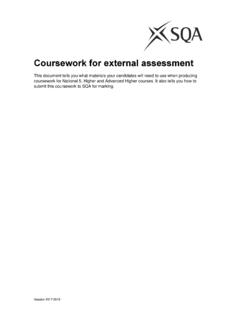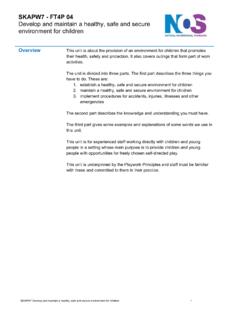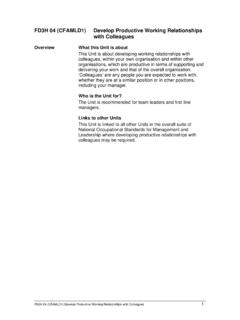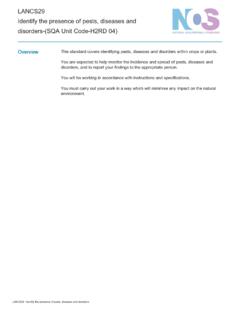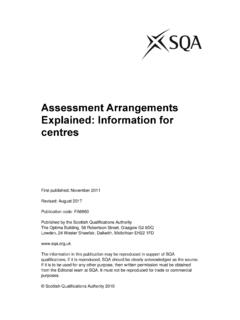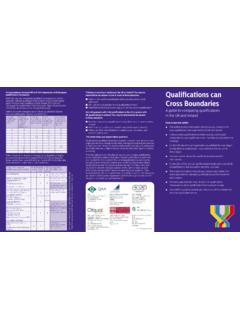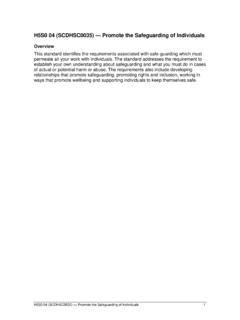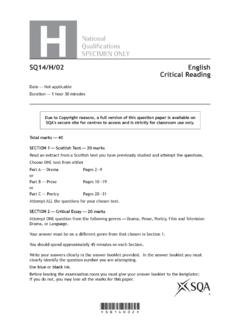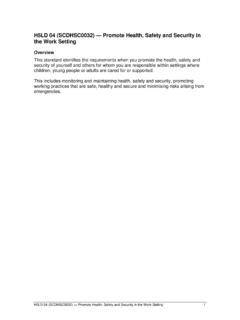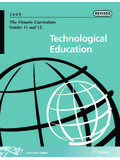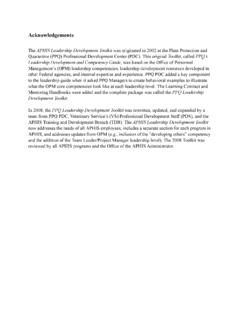Transcription of Assess Workplace Competence Using Direct and Indirect …
1 Unit L&D9DI Assess Workplace Competence Using Direct and Indirect Methods (FD41 04). Source: Learning and Development Standard 9. Who this Unit is for This Unit is for those who Assess in the Workplace Using a wide range of assessment methods, both Direct and Indirect . The person wishing to achieve this Unit (the assessor- candidate) will use the following Direct methods: observation examination of work products (both created and not created at the time of observation). questioning They may also be involved in authenticating Indirect evidence such as: discussing with candidates testimony of others (witnesses). examining candidate statements assessing candidates in simulated environments Recognising Prior Learning (RPL) otherwise known as the Accreditation of Prior Achievement (APA).
2 The assessment decisions made by the assessor-candidate will be used to confirm achievement in a range of situations such as assessing SVQs, other Workplace qualifications or in-company standards. For this Unit, assessments must be of a substantial but realistic and manageable piece of the candidate's work. Each assessment should cover the full assessment cycle to include planning, judging evidence, providing feedback and recording the decision. What this Unit is about The types of activities the assessor-candidate will be involved in include: 1 Preparing to Assess 2 Planning assessments 3 Assessing candidate performance and knowledge 4 Confirming progression and achievement To achieve this Unit the assessor-candidate must Assess the Competence of two candidates on two occasions in their place of work Using a set of standards such as those provided by a national awarding/standard setting body or the candidates' employer.
3 The assessor-candidate's knowledge will be assessed by them taking part in a discussion with their assessor, or answering questions (either written or oral), or providing a statement of how and why they carried out certain activities, or a combination of these. Accredited 24 November 2010. The assessor-candidate's performance will be assessed by their assessor observing them carrying out assessments and by looking at products of their work such as: notes relating to pre-assessment planning discussions assessment plans agreed with the candidates records detailing assessment decisions feedback records used to convey progression/achievement to the candidates records of the standardisation activities the assessor-candidate has been involved in The assessor will also observe the assessor-candidate assessing, giving feedback to at least one of the candidates and reviewing progress.
4 Accredited 24 November 2010. Terminology Within this Unit the following explanations and examples apply: Assessment method Observation, questioning, checking products of work, discussing with candidates, testimony of others (witnesses, examining candidate statements, assessing candidates in simulated environments, Recognising Prior Learning (RPL) otherwise known as the Accreditation of Prior Achievement (APA). Authentic Being the candidate's own work. Current/currency Evidence that the candidate still possesses the skills and knowledge being claimed. Equality A state of fair treatment that is the right of all the people regardless of differences in, for example, culture, ability, gender race, religion, wealth, sexual orientation, or any other group characteristic.)
5 Diversity Acknowledging that each individual is unique and recognising our individual differences in, for example, culture, ability, gender, race, religion, wealth, sexual orientation, or any other individual characteristic. Identify and collect evidence This is done through the assessment process, for example by assessor observations, checking products of work, asking questions, discussing with candidates, testimony of others (witnesses, examining candidate statements, assessing candidates in simulated environments, Recognising Prior Learning (RPL) . otherwise known as the Accreditation of Prior Achievement (APA). Reliable Assessors achieving a consistent approach to the way they make judgements about candidate evidence.)
6 Requirements These could be the requirements of the practitioner's own organisation or those of an external organisation, such as awarding organisation. Risk assessment Risk relates to breach of the quality assurance principles (VARCS). Sufficient Enough evidence as specified in Evidence Requirements or Assessment Strategy. Valid Selecting and Using a method of assessment appropriate to the skills and knowledge being assessed. Fair Ensuring candidates are assessed consistently and objectively to the standards. Accredited 24 November 2010. Safe This covers the health, safety and welfare of the person being assessed. Special assessment An agreement made with the candidate and the arrangement organisation to ensure fair assessment of the candidate without diluting the standards, for example, taking account of shift working by arranging assessment opportunities to suit the candidate's work patterns.
7 Accredited 24 November 2010. Performance Knowledge What the assessor-candidate What the assessor-candidate must know must do: 1 Prepare to Assess 1 How to judge when the candidate is ready for assessment. (a) Ensure candidates 2 The range of information that should be made understand the purpose, available to candidates before assessment begins. requirements and 3 The concepts and principles of assessment. processes of assessment. 4 Standards to be assessed, assessment/evidence requirements, regulatory requirements. 5 The candidates' job role and their work environment and how this influences which assessment approach to use.
8 2 Plan assessments 1 The principles of assessment (validity, authenticity, reliability, currency,sufficiency (VARCS)). (a) Identify evidence that is 2 The uses, benefits and drawbacks of the different valid, authentic and assessment methods, including those that use sufficient. technology. (b) Plan to use valid, fair and 3 Types of risks, including health, safety and welfare reliable and safe and quality assurance risks, when assessing and assessment methods. how to manage them. (c) Plan assessment to meet 4 How to plan assessments in own area of requirements and candidate responsibility, involving candidates and allowing needs.
9 Access. 5 How assessment arrangements can be adapted to meet the diverse needs of individual candidates. 6 How disputes and appeals will be handled and how confidentiality will be maintained. 3 Assess candidate 1 The principles of Competence based assessment performance and (competent versus not yet competent). knowledge 2 How to judge evidence in relation to specified criteria ensuring the quality assurance principles are applied (a) Collect evidence that is (valid, fair, reliable, current, safe). valid, authentic and 3 Achieving objectivity and consistency when making sufficient. assessment decisions and what to do when there is (b) Use valid, fair, reliable and doubt.
10 Safe assessment methods. 4 Standardisation processes and how to contribute to (c) Make assessment those. decisions against specified 5 How to co-operate and work effectively with others criteria. involved in the assessment process. (d) Work with others to ensure the standardisation of assessment practice and outcomes. Accredited 24 November 2010. Performance Knowledge What the assessor- What the assessor-candidate must know: candidate must do: 4 Confirm progression 1 The purpose and value of feedback in the assessment and achievement cycle. 2 How to deliver constructive feedback and the next (a) Provide feedback to the steps in the assessment process.
